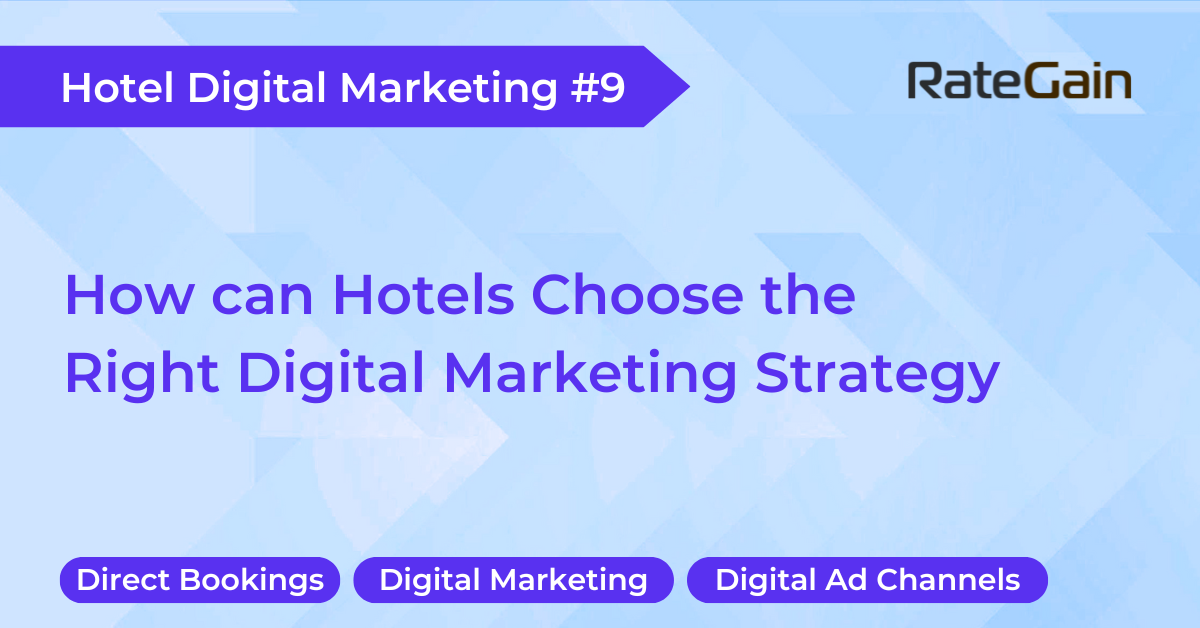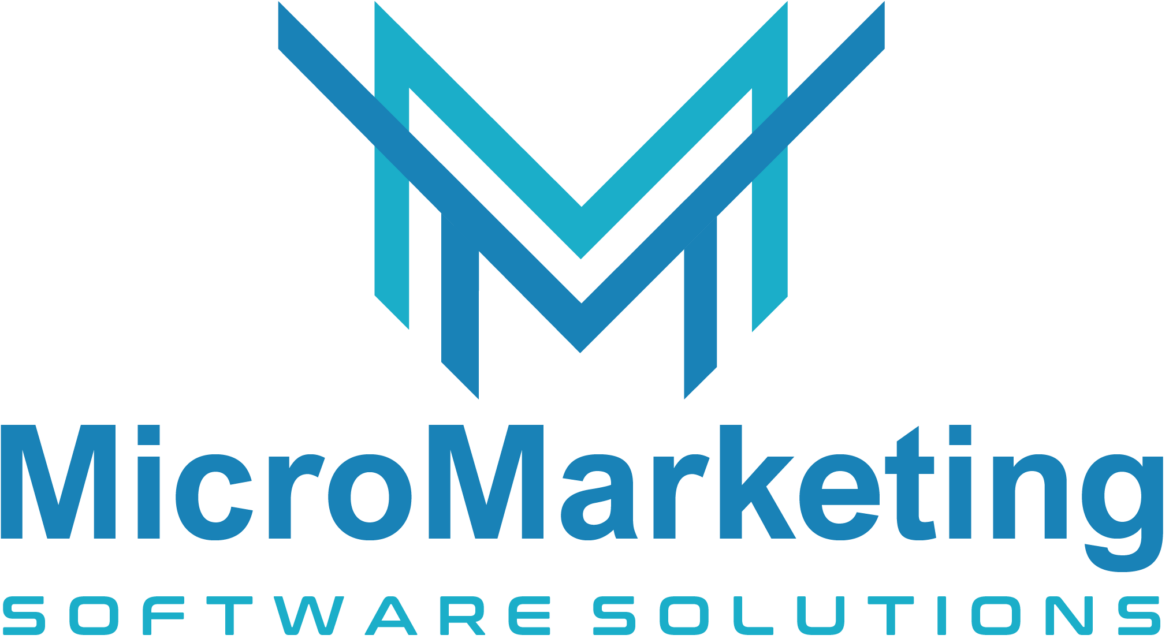Digital marketing is essential for business growth in today’s digital age. But how do you choose the right strategy?
Every business needs a tailored digital marketing plan to succeed. With countless options available, it’s easy to feel overwhelmed. A solid strategy can boost your online presence, attract customers, and increase sales. But selecting the right approach requires careful consideration.
Factors like your audience, budget, and goals play a crucial role. This blog will guide you through the process, helping you understand key strategies and how to choose the best one for your business. Stay tuned to learn how to navigate the digital marketing landscape effectively and make informed decisions for your brand’s success.
Importance Of Digital Marketing
Choosing the right digital marketing strategy is crucial for any business. Digital marketing helps you reach your target audience and grow your brand. It offers tools and techniques to connect with customers online. Understanding the importance of digital marketing can lead to better business decisions.
Reach And Engagement
Digital marketing allows you to reach a wide audience. You can use various online platforms to connect with potential customers. Social media, email marketing, and search engines are powerful tools.
Here are some benefits of digital marketing for reach and engagement:
- Global Reach: You can target people from different parts of the world.
- Cost-Effective: Digital campaigns are often cheaper than traditional advertising.
- Measurable Results: You can track the success of your campaigns in real-time.
Engagement is another key factor. It involves interacting with your audience. This can be through comments, likes, shares, and direct messages.
Consider these methods to improve engagement:
- Create Quality Content: Offer valuable information to your audience.
- Use Visuals: Images and videos attract more attention.
- Respond Promptly: Answer questions and comments quickly.
A table can also help illustrate the advantages of digital marketing:
| Method | Reach | Engagement |
|---|---|---|
| Social Media | High | High |
| Email Marketing | Moderate | Moderate |
| SEO | High | Low |
Brand Visibility
Brand visibility is essential for business growth. Digital marketing helps you increase your brand’s presence online. More visibility means more potential customers know about your business.
Several techniques enhance brand visibility:
- Search Engine Optimization (SEO): Optimizing your website to rank higher on search engines.
- Content Marketing: Producing valuable content that attracts and engages your audience.
- Social Media Marketing: Using social platforms to promote your brand.
SEO is one of the most effective methods. It involves optimizing your website’s content to rank higher on search engine results pages (SERPs). Higher rankings lead to more clicks and visits.
Content marketing also plays a crucial role. It involves creating and sharing valuable content. This can be blog posts, articles, videos, or infographics. Quality content attracts more visitors and keeps them engaged.
Social media marketing allows you to reach a large audience. Platforms like Facebook, Instagram, and Twitter are great for promoting your brand. Sharing posts, running ads, and interacting with followers improve visibility.
Consider these benefits of brand visibility:
- Increased Trust: More people recognize your brand and trust it.
- Higher Sales: Visibility leads to more potential customers and sales.
- Competitive Advantage: Stand out from competitors.
Brand visibility is crucial. It helps your business grow and succeed in the digital world.

Credit: rategain.com
Types Of Digital Marketing
Choosing the right digital marketing strategy is essential for businesses to thrive in the digital age. Various types of digital marketing strategies cater to different business needs and goals. Understanding these types helps in crafting a tailored approach that maximizes online presence and engagement.
Seo Strategies
Search engine optimization (SEO) is a crucial digital marketing strategy. It focuses on improving a website’s visibility in search engine results. Effective SEO strategies can drive organic traffic, increase brand awareness, and boost credibility.
Key components of SEO include:
- Keyword Research: Identifying the terms and phrases your target audience uses in search engines.
- On-Page SEO: Optimizing individual web pages, including meta tags, headings, and content.
- Off-Page SEO: Building backlinks from reputable websites to enhance domain authority.
- Technical SEO: Ensuring website speed, mobile-friendliness, and a clean sitemap.
Here’s a simple table summarizing the key components of SEO:
| Component | Description |
|---|---|
| Keyword Research | Finding search terms used by potential customers. |
| On-Page SEO | Optimizing content, meta tags, and headings. |
| Off-Page SEO | Building backlinks to improve site authority. |
| Technical SEO | Improving site speed and mobile compatibility. |
SEO is an ongoing process. Regular updates and monitoring ensure your website stays relevant in search results.
Content Marketing
Content marketing involves creating and sharing valuable content to attract and engage a target audience. It helps build brand awareness, establish authority, and drive customer action.
Effective content marketing strategies include:
- Blogging: Writing informative and engaging blog posts related to your industry.
- Video Marketing: Creating videos that educate or entertain your audience.
- Infographics: Designing visual content that simplifies complex information.
- Social Media Marketing (SMM): Sharing content on social platforms to reach a broader audience.
- Email Marketing: Sending newsletters and updates to keep your audience informed.
Content marketing works well with other digital marketing strategies, such as SEO and social media. For example, a well-written blog post optimized for search engines can attract organic traffic and be shared on social media to increase reach.
Consistency is key in content marketing. Regularly publishing high-quality content helps build trust and keeps your audience engaged.
Identifying Your Audience
Choosing the right digital marketing strategy starts with identifying your audience. Understanding who your customers are is crucial. This helps in creating content that resonates with them. It also ensures that your marketing efforts reach the right people. Let’s explore how to identify your target audience effectively.
Demographics
Analyzing audience demographics is a key step in understanding your audience. Demographics provide essential information about your customers. This includes age, gender, income level, education, and location. These factors help in targeting the right customer base.
Here are some steps to understand your audience through demographics:
- Collect data: Use tools like Google Analytics or social media insights. They provide valuable demographic data.
- Segment your audience: Divide your audience based on demographic factors. This helps in creating tailored marketing messages.
- Build customer personas: Create detailed profiles of your ideal customers. This includes demographic information. Personas guide your marketing strategies.
Consider using a table to organize demographic data:
| Demographic Factor | Data Source | Importance |
|---|---|---|
| Age | Google Analytics | Helps in tailoring content to different age groups |
| Gender | Social Media Insights | Guides product recommendations |
| Location | Website Analytics | Enables geo-targeted campaigns |
Demographics are vital for audience segmentation strategies. They help you find your ideal customer. This ensures that your marketing efforts are more effective.
Behavioral Insights
Behavioral insights offer a deeper understanding of your audience. These insights focus on how customers interact with your brand. This includes their purchasing habits, website behavior, and social media engagement.
Follow these steps to gather behavioral insights:
- Track website behavior: Use tools like Google Analytics. Monitor how visitors navigate your website. Identify pages they visit most.
- Analyze purchase history: Look at past purchases. Understand what products or services are popular. This helps in predicting future trends.
- Monitor social media engagement: Check likes, shares, and comments. These metrics show what content resonates with your audience.
Behavioral insights are important for several reasons:
- Personalized marketing: Tailor your marketing messages based on behavior. This improves engagement and conversion rates.
- Customer journey mapping: Understand the steps customers take before making a purchase. This helps in optimizing their journey.
- Loyalty programs: Identify loyal customers. Offer them exclusive deals or rewards. This increases customer retention.
Tools to identify target audiences based on behavior include:
- Google Analytics
- Hotjar
- HubSpot
Behavioral insights are crucial for digital marketing audience research. They help you understand what drives your audience. This knowledge enables you to create more effective marketing strategies.

Credit: www.linkedin.com
Setting Clear Goals
Choosing the right digital marketing strategy is crucial for any business. One of the most important aspects of a successful strategy is setting clear goals. Without clear goals, it’s hard to measure progress and make adjustments. Clear goals guide your marketing efforts and keep you focused. They help you allocate resources and track success. Let’s delve into setting clear goals for your digital marketing strategy.
Short-term Objectives
Short-term objectives are the immediate targets you want to achieve. These goals usually span a few weeks to a few months. They help you stay on track and see quick results. Short-term objectives should be specific, measurable, achievable, relevant, and time-bound (SMART).
Examples of short-term objectives:
- Increase website traffic by 20% in the next 3 months.
- Generate 50 new leads within a month.
- Boost social media engagement by 15% in 60 days.
These objectives help you see quick wins. They keep your team motivated. Breaking down your larger goals into short-term objectives makes them more manageable. It allows you to adjust your strategy based on immediate feedback.
| Objective | Timeline | Key Performance Indicator (KPI) |
|---|---|---|
| Increase website traffic | 3 months | Website analytics |
| Generate new leads | 1 month | Lead count |
| Boost social media engagement | 2 months | Engagement metrics |
Setting short-term objectives also allows you to test different tactics. You can see what works best for your audience. It helps you learn and improve. Short-term goals are stepping stones towards your long-term vision.
Long-term Vision+-
Long-term vision is about where you want your business to be in the future. These goals usually span one year or more. Long-term goals provide direction and purpose. They help you stay focused on the bigger picture.
Examples of long-term goals:
- Establish your brand as a market leader in 5 years.
- Achieve a 50% increase in annual revenue in 3 years.
- Expand to international markets within 2 years.
Long-term goals are broad and ambitious. They require careful planning and sustained effort. They help you make strategic decisions. These goals align with your company’s mission and values. They ensure that every short-term objective contributes to your ultimate vision.
Achieving long-term goals involves several steps:
- Identify your vision and mission.
- Set milestones to measure progress.
- Allocate resources effectively.
- Monitor and adjust your strategy as needed.
Having a long-term vision keeps your team aligned. It helps you stay focused during challenges. It provides a sense of purpose and direction. Long-term goals are the foundation of sustainable growth. They ensure your business evolves and adapts to changing market conditions.
Budget Considerations
Choosing the right digital marketing strategy involves several critical elements. One of the most important aspects is budget considerations. How to allocate a marketing budget effectively can determine the success of your campaigns. Setting a digital marketing budget that aligns with your business goals while ensuring maximum returns is crucial. Let’s dive into some key areas to focus on while planning your marketing budget.
Cost-effective Solutions
Implementing cost-effective marketing strategies can help you maximize your budget without compromising on results. Here are some approaches that can provide high value at a lower cost:
- Content Marketing: Creating valuable content can attract and engage your audience. Blog posts, articles, and social media content can be produced at a low cost.
- Email Marketing: Email campaigns can be very affordable and offer a high return on investment. Use personalized emails to nurture leads and retain customers.
- Social Media: Organic social media marketing is cost-free and can reach a wide audience. Engaging with followers and sharing interesting content can boost brand awareness.
- SEO: Investing in search engine optimization (SEO) can drive long-term traffic to your website. Focus on relevant keywords and quality content to improve your search rankings.
Here’s a table that highlights some cost-effective solutions and their benefits:
| Solution | Benefits |
|---|---|
| Content Marketing | Builds authority, attracts traffic |
| Email Marketing | High ROI, personalized communication |
| Social Media | Engages audience, increases brand awareness |
| SEO | Improves search rankings, drives organic traffic |
Roi Analysis
Calculating marketing ROI is essential for understanding the effectiveness of your marketing efforts. ROI analysis helps you determine which strategies provide the best returns. Here are some steps to conduct a thorough ROI analysis:
- Set Clear Goals: Define what you want to achieve with your marketing campaigns. These goals can include increased sales, more website traffic, or higher engagement rates.
- Track Metrics: Use analytics tools to measure the performance of your campaigns. Track metrics such as click-through rates, conversion rates, and customer acquisition costs.
- Calculate Costs: Include all costs associated with your marketing activities. This includes ad spend, content creation costs, and any other expenses.
- Analyze Data: Compare the results of different campaigns to identify which ones are the most cost-effective. Focus on strategies that deliver the highest returns.
- Adjust Strategy: Use the insights from your analysis to refine your marketing strategies. Allocate more budget to high-performing campaigns and cut back on those that are less effective.
Here are some key metrics to track for a comprehensive ROI analysis:
- Conversion Rate: The percentage of visitors who take a desired action.
- Customer Acquisition Cost (CAC): The total cost of acquiring a new customer.
- Lifetime Value (LTV): The total revenue generated by a customer over their lifetime.
- Return on Ad Spend (ROAS): The revenue generated for every dollar spent on advertising.
By regularly analyzing your ROI, you can make informed decisions about how much to spend on marketing and ensure that your budget planning for small businesses is both efficient and effective.
Selecting Platforms
Choosing the right digital marketing strategy can be tricky. One key decision is selecting the right platforms to reach your audience. This involves understanding which channels will best connect you with your target market. Let’s dive into some popular platforms and their benefits.
Social Media Options
Social media platforms are essential for any digital marketing strategy. They offer diverse ways to connect with your audience. Here are some popular options:
- Facebook Ads: Great for targeting a wide range of demographics. Useful for both B2C and B2B marketing.
- Instagram Ads: Ideal for visually driven campaigns. Perfect for brands with a younger audience.
- LinkedIn Ads: Best for B2B marketing. Helps you reach professionals and decision-makers.
- Twitter Ads: Useful for real-time engagement. Great for promoting events and news.
- TikTok Ads: Excellent for reaching Gen Z. Perfect for creative, short-form video content.
- Google Ads and Bing Ads: Effective for search marketing. Helps you appear in search results for relevant keywords.
Choosing the right social media platform depends on your goals and target audience. Consider these factors:
| Platform | Best For |
|---|---|
| Facebook Ads | Wide demographic reach |
| Instagram Ads | Visual content, younger audience |
| LinkedIn Ads | B2B marketing, professionals |
| TikTok Ads | Gen Z, creative content |
| Google Ads | Search marketing |
| Bing Ads | Alternative search marketing |
Email Marketing
Email marketing remains a powerful tool. It allows direct communication with your audience. Using the right email platforms can make a big difference.
- Personalization: Tailor messages to individual preferences and behaviors. This increases engagement.
- Automation: Schedule emails in advance. Saves time and ensures timely delivery.
- Segmentation: Group your audience based on interests or behaviors. This makes your campaigns more effective.
Popular email platforms include:
- MailChimp: User-friendly and great for small businesses.
- Constant Contact: Offers excellent customer support and easy-to-use templates.
- SendinBlue: Known for its powerful automation features.
- HubSpot: Integrates well with other marketing tools. Great for comprehensive campaigns.
Email marketing is cost-effective. It provides a high return on investment. Remember to keep your content relevant and engaging. Use clear calls to action. This encourages your audience to take the next step.
Measuring Success
Choosing the right digital marketing strategy is crucial for your business growth. But how do you know if your strategy is working? That’s where measuring success comes in. By tracking and analyzing key metrics, you can understand what’s effective and what needs improvement. Let’s explore the tools and indicators that help you measure your digital marketing success.
Analytics Tools
To measure the success of your digital marketing strategy, you need robust analytics tools. These tools help you gather and analyze data on how your campaigns are performing. Here are some popular options:
- Google Analytics: This free tool provides detailed insights into your website traffic. You can track visitor behavior, page views, and conversion rates.
- HubSpot: HubSpot offers a comprehensive suite of marketing analytics tools. You can track email campaigns, social media engagement, and lead generation efforts.
Using these tools, you can create detailed reports and dashboards. This makes it easy to share results with your team and stakeholders. Here’s a quick comparison of Google Analytics and HubSpot:
| Feature | Google Analytics | HubSpot |
|---|---|---|
| Cost | Free | Paid |
| Website Traffic Analysis | Yes | Yes |
| Email Campaign Tracking | No | Yes |
| Lead Generation Tracking | No | Yes |
Choose the tool that best fits your needs and budget. Remember, the goal is to gather accurate data that helps you make informed decisions.
Key Performance Indicators
Key Performance Indicators (KPIs) are measurable values that show how effectively your digital marketing strategy is achieving business objectives. Here are some important KPIs to monitor:
- Conversion Rate: The percentage of visitors who complete a desired action, like making a purchase or signing up for a newsletter.
- Click-Through Rate (CTR): The ratio of users who click on a specific link to the number of total users who view a page, email, or ad.
- Customer Acquisition Cost (CAC): The cost of acquiring a new customer. This includes all marketing and sales expenses.
- Return on Investment (ROI): A measure of the profitability of your marketing efforts. Calculate it by dividing the net profit by the cost of the investment.
- Social Media Engagement: Metrics such as likes, shares, comments, and follows on social media platforms.
Tracking these KPIs helps you understand if your strategy is effective. Here’s a brief example of how to set up KPIs:
| Objective | KPI | Target |
|---|---|---|
| Increase Website Traffic | Organic Search Traffic | 20% increase in 6 months |
| Boost Sales | Conversion Rate | 5% increase in 3 months |
| Improve Brand Awareness | Social Media Engagement | 10% more followers in 4 months |
Setting clear targets for each KPI ensures you can track progress and adjust your strategy as needed. Regularly review these metrics to stay on top of your digital marketing efforts.
Adapting Strategies
Choosing the right digital marketing strategy is crucial for the success of your business. One key aspect is adapting strategies. The digital landscape changes rapidly, and what works today might not work tomorrow. Adapting strategies ensures that your marketing efforts stay relevant and effective. This requires responding to trends and continuously improving your approach.
Responding To Trends
In the world of digital marketing, trends shift quickly. Staying ahead of these trends can give your business a competitive edge. Here are some ways to respond to trends:
- Monitor Social Media: Platforms like Twitter, Facebook, and Instagram are great for tracking trends. Look at what people are talking about and see if you can join the conversation.
- Use Analytics Tools: Google Analytics and other tools can help you see what is driving traffic to your site. Adjust your content based on these insights.
- Follow Industry Leaders: Influencers and thought leaders often set trends. Follow them to stay updated.
Consider the following table for a quick comparison of tools for tracking trends:
| Tool | Purpose | Cost |
|---|---|---|
| Google Analytics | Website traffic analysis | Free |
| Hootsuite | Social media management | Paid |
| BuzzSumo | Content research | Paid |
By keeping an eye on these trends, you can adapt your strategy to better meet the needs of your audience. This helps ensure that your content remains relevant and engaging.
Continuous Improvement
Digital marketing is not a set-it-and-forget-it type of activity. It requires constant attention and improvement. Here are some ways to ensure continuous improvement:
- Regularly Review Analytics: Check your website and social media analytics to see what is working and what is not. Make adjustments as needed.
- Get Feedback: Ask your customers for feedback. This can provide valuable insights into what you are doing right and where you can improve.
- Test Different Approaches: Use A/B testing to compare different versions of your content. See which one performs better and use that as your guide.
Consider these key areas for continuous improvement:
- Content Quality: Regularly update and improve your content to keep it fresh and relevant.
- SEO: Stay updated on the latest SEO practices to ensure your content ranks well in search engines.
- User Experience: Make sure your website is easy to navigate and user-friendly.
By focusing on continuous improvement, your digital marketing strategy will remain effective and aligned with your business goals. Regular reviews and updates are essential for long-term success.
Achieve Your Business Goals With Micromarketing.dev
Choosing the right digital marketing strategy can be challenging. Achieve your business goals with MicroMarketing.dev by crafting strategies that align with your unique needs. Whether aiming to boost ROI or grow your business online, MicroMarketing.dev offers tailored solutions to ensure success.
Custom Strategies Designed To Meet Your Needs
MicroMarketing.dev specializes in marketing services to boost ROI and deliver results. Their team understands that every business is different. Hence, they create custom strategies designed to meet your needs. Here’s how they can help:
- Thorough Market Analysis: Evaluates competitors and industry trends.
- Target Audience Identification: Pinpoints your ideal customer base.
- Goal Setting: Establishes clear, achievable business objectives.
MicroMarketing.dev offers the best digital marketing services for small businesses, ensuring you receive personalized attention and strategies tailored to your specific goals. They provide:
| Service | Description |
|---|---|
| SEO Optimization | Improves search engine rankings to increase visibility. |
| Social Media Marketing | Engages your audience on popular platforms. |
| Email Marketing | Creates targeted campaigns to nurture leads. |
For those wondering how to grow your business online, MicroMarketing.dev’s online marketing solutions for success include a blend of content creation, paid advertising, and performance tracking.
Their focus on achieving business goals with tailored strategies means they adapt and evolve their tactics based on your needs. This approach ensures continuous improvement and sustained revenue growth through digital marketing strategies.

Credit: www.10comwebdevelopment.com
Frequently Asked Questions
What Is A Digital Marketing Strategy?
A digital marketing strategy is a plan to achieve marketing goals using online channels. It includes tactics like SEO, social media, and email marketing.
How To Choose The Right Digital Marketing Strategy?
To choose the right digital marketing strategy, identify your goals, target audience, and budget. Then, select channels and tactics that align with these factors.
Why Is Seo Important In Digital Marketing?
SEO is crucial because it increases your website’s visibility on search engines. Higher visibility leads to more traffic and potential customers.
What Role Does Social Media Play In Digital Marketing?
Social media helps businesses engage with their audience, build brand awareness, and drive traffic to their website. It is essential for customer interaction and feedback.
Conclusion
Choosing the right digital marketing strategy can boost your business effectively. Evaluate your goals. Understand your audience. Tailor your approach based on these insights. Regularly assess your strategy’s performance. Adjust tactics as needed. Stay updated with trends. Consistent effort leads to better results.
A good strategy enhances online presence. It drives growth. It improves customer engagement. Keep refining your approach. Success in digital marketing requires patience and persistence. Stay focused. Your business will benefit greatly.
Ready to Take Your Business to the Next Level?
Let’s work together to achieve your goals. Contact us today, and we’ll be happy to answer your questions and provide the solutions you need to succeed. Don’t wait—your growth starts here!




